#Metasomer
Text
@sonic-oc-showdown
well, i said that i'd make a post breaking down stings design if he made it to round 2 and so! this is it! this is that post
without further ado, let's talk about how i designed my boy!
warnings for (drawn) close-up images of scorpions:
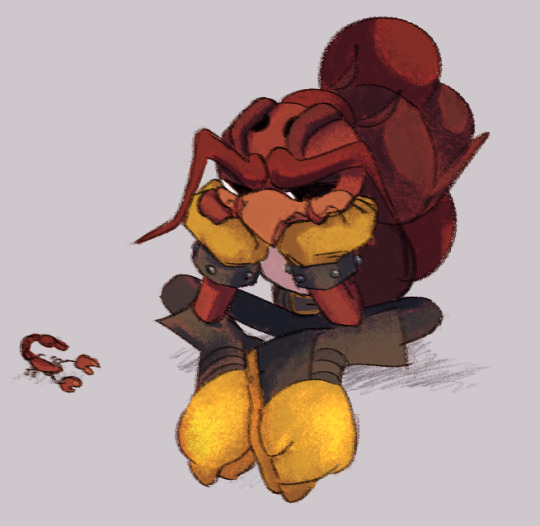
let's start off with his head!

the vast majority of sting's head comes from scorpion anatomy! his eyebrows are based off of a pair of a scorpion's walking legs. scorpions have 4 pairs of walking legs which are attached to the head/thorax. i can't represent all 4 pairs but i could at least represent 1, hence why his eyebrows are Huge and stick off of his head
the pair of darker red tubes that go from behind his eyebrows to the back of his head, those are meant to be pedipalps! pedipalps are actually part of a scorpion's mouth, but for sonic character design purposes i used it to resemble hair. as for the actual pincers, thats what the two things on the back of his head are. if you were to translate it to hair, it'd be like a tight, messy bun
the other part of a scorpion's mouth are the chelicerae! his mouth originally took more inspiration from how a scorpion's mouth is supposed to look, but due to how difficult it was to consistently draw + emote in general, this was changed to be more beak-like (using mimic for reference). his "tusks" are still reminiscent of the tip of the chelicerae, only they turn up to help his mouth look more distinct!
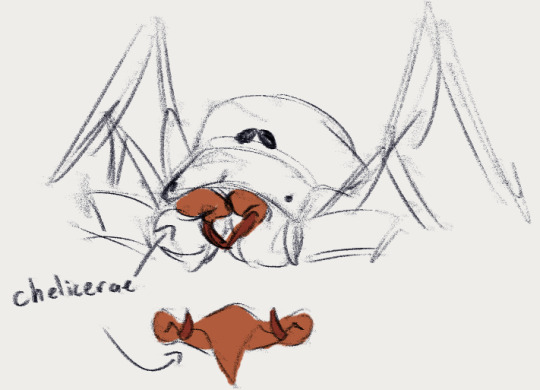
as for the 2 pairs of dot markings on his head, those are meant to represent eyes! scorpions have at least 6 eyes, 12 at most. the 2 pairs of markings are meant to give the impression that sting has 6 eyes!
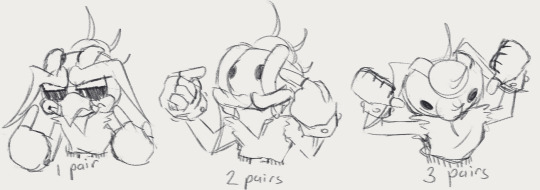
next up is his clothes! since sting specializes in close-combat fighting, he doesn't really wear loose clothes as he doesn't want to risk tripping over himself or getting caught on anything. that's why he wears a simple torn tank top and some pants
his belt is fashioned after the segments on a scorpion's abdomen! thats why there's all those lines on it
his shoes, the golden edge of his shoes with the two little protrusions, those are meant to resemble a scorpion's paws!

as for sting's tail, the reason why it's so thick is because he is a highly venomous scorpion! it's also why the pincers on his head are so small: scorpions with thick tails and small pincers are Very Venomous while scorpions with thin tails and big pincers are mostly harmless! i went for a more spherical shape with his tail because i thought it looked cool. he originally didn't have a set number of segments but ultimately i landed on 6, which is the same amount of an actual scorpion (5 metasomal segments + the 1 pincer)
lastly, his palette! sting's palette is actually inspired by the deathstalker scorpions from kipo and the age of wonderbeasts! actual deathstalkers are more orange/brown, but the mutated ones in kipo are various shades of red. you can really see the inspiration in this image here
his tail has an alternating color palette for readability! it'd be harder to make out more action-y poses if it was all the same color, or if it was half lighter half darker, so the alternating colors help make it more distinct
this art is from august! it helps show the color breakdown
(flat + shade)

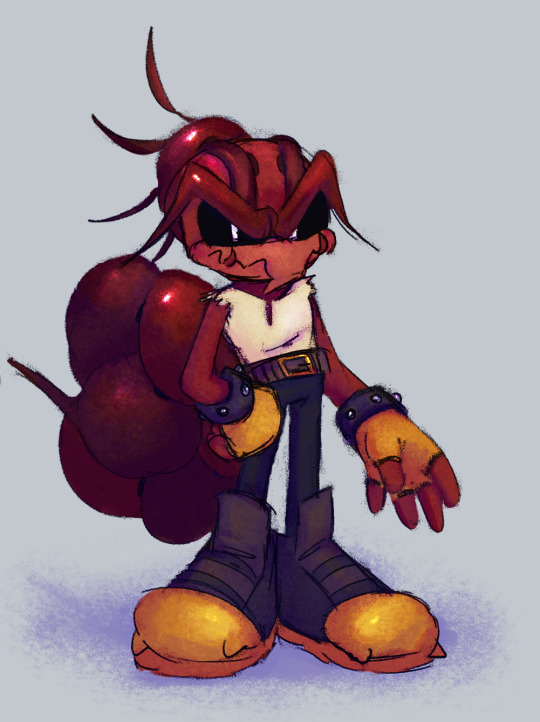
AND THATS IT! that is all the thought and inspiration i put into my boy. if you took the time to actually read through all of this thank you so much!!! it genuinely means a lot to me 🌟
if you really like sting, please consider voting for him in the oc showdown! you can vote here
#cosmic chatter#sting the scorpion#sonic oc showdown 2#my ocs#sonic oc#cw insects#for anyone who is a little squeamish abt buggies#i love my boy smmmm my special guy#pardon any art inconsistencies i forgot to eat dinner and uhh shaky wrists oopsie#i had to draw all of this last night bcuz i work long shifts on sat + sun oogh
55 notes
·
View notes
Link
Just when you think you’ve seen it all, there’s another wasp that out-weirds the others. This Eurytomid is definitely a contender for one of the weirdest looking wasps I’ve ever seen! There’s a wasp in every shape, colour, size, you name it!
13 notes
·
View notes
Text
Laying out digital asset ecology, Noah promotes diversified trading ecology
Data assets are now widely recognized as an important driver of economic growth. Data as a class of assets is the embodiment of capitalization of information resources, so that data resources not only have economic value and application service itself, but also have internal financial value. Just as other tangible assets are monetized, data and services embody value. Data asset management can promote digital operation innovation and continuously launch new digital operation products and services in the era of data economy. Noah is seizing the opportunity of this era to promote the ecological layout of digital assets and promote the diversified development of the trading ecosystem.

Noah wallet "main battlefield" -- digital asset management
Digital assets are one of the most important marginal and investment opportunities in the current development of the meta-universe. The soaring price of digital currencies represented by Bitcoin and the listing of Roblox in the US stock market make investors in the secondary market begin to pay attention to the investment opportunities of metasomes, especially the rights confirmation and transaction of digital assets based on blockchain technology. Blockchain builds an economic system of digital assets in the metasomes, bringing numerous opportunities to investors, including the financial management market. With the increasing demand for digital asset investment and financial management, Noah Wallet tries its best to provide users with more diversified digital asset financial products to meet their diverse financial needs.
The application scenario of digital asset financing is the "main battlefield" of Noah wallet. Combined with blockchain and AI quantitative technology, Noah Wallet not only has unique quantitative strategy financial management advantages, but also has the advantage of unchangeable data on the chain, so that every user can easily conduct financial investment of digital assets.
Noah Wallet basic scenario -- digital assets secure custody, transfer, transaction
Secure custody, transfer and transaction of digital assets are the basic application scenarios of Noah wallet. The Noah wallet is able to access each token's blockchain node, and all blockchain applications run independently of each other, but are related to each other. Users can use the platform without tedious operation steps, easily switch back and forth, improve the use efficiency, and bring users quality experience. At the same time, because only a very small number of digital asset traders choose to keep these digital currencies in practice, other investors (especially institutional investors) prefer to outsource the custody of these digital assets (similar to bank storage). This allows Noah wallet to act as a "bank" for digital assets by closely linking its hosting business to its trading business.
Noah Wallet scenario promotion -- Loan management
Digital asset lending gives full play to the advantages of digital assets being easy to transfer, transparent transaction and impossible to forge. As its mode similar to traditional P2P lending is easy to be recognized by a larger market and users, it also has the conditions for business explosion. From the practical point of view, the ultra-low risk and efficient business process design of digital currency pledge can help the financing parties to complete the transaction at a faster and lower cost. Noah Wallet has the inherent advantage of offering existing users a digital asset collateral loan service while helping them retain their digital assets. The Noah Wallet extends its digital assets to the realm of loan management, allowing users to deposit cryptocurrencies for interest or pledge them to lend out other currencies.
Digital assets trade rapid development today, Noah breakthrough innovation platform, standing on the leading edge, take the initiative to hug the demand of The Times, actively promote trade way diversification, abundant traditional trading scenario, a trading platform of safety and convenience coexist, assisted by digital means, help users achieve freedom of wealth.
0 notes
Text
Ru'thûn, at the stage bridging one's maturation into a Knight or Wizard, was essentially a very tall Acolyte with the tail spines indicative of promising metasomal growth. what remains of her adolescent chitin was prematurely shattered and cut away by a Knight's blade, beneath her robes and armour she is a little fragile-looking with so much waxy scar tissue obstructing any further growth of the thin layer that remains of it. having natural horns cut away leaves a terrible ache, she remembers holding a piece of it within the Sea of Screams and observing the trabecular green-brown marrow within, how sickly it all looked as the flesh began to die, if it could ever have been alive to begin with.
despite having hide thin enough to compete only with Thralls (this is not at all truth but she likes it when prey thinks this of her), Ru'thûn does not take to the skies as the Wizards do in fear of being torn apart by terrestrial combat. at 18 feet tall she is more than delighted to compete with a Guardian wretch through the struggle of blades. she finds their little spinning cleavers very darling, she does so admire innovation, but it barely leaves a scratch at her ankles before she has enough and splits the little meatbag in half by driving her sword through them and into the ground. she is likely the largest Wizard a Guardian has ever laid eyes on, and she dwarfs other Broodqueens quite easily.
#Ru'thûn fights more as a Knight does#so i imagine she is more like some horrifying soulsborne boss in that regard#just stalks you through the arena and then drives a sword into the ground hard enough to cause a huge shockwave you have to dodge#and if you jump too early you get caught by the swing of the sword in her other hand#viktor.txt#i started drawing her on paper#her armour/chitin has the same spiny withered quality to it as something from such a game.#gonna do something unheard of and merely post this directly rather than letting it sit in my drafts#oc: ru'thûn
3 notes
·
View notes
Text
Các khu vực tập chung nhiều đá quý tại Việt Nam
Nghiên cứu về địa chất của Việt Nam đã chỉ ra tiềm năng đá quý ở Việt Nam rất cao và đã tìm thấy trong thập kỷ qua rất nhiều mỏ đá quý, đặc biệt là ruby và sapphire.Ở miền Bắc Việt Nam, mận ngọc được tìm thấy ở Lục Yên, Yên Bái và Quỳ Châu. Các khu vực trong các mỏ nguyên sinh chứa đá biến chất và trong các chất định vị vì thế hãy cùng Đá quý Văn Duyên tìm hiểu về Tổng hợp các loại đá quý tại Việt Nam nhé!
Xem chi tiết tại: https://daquyhoanggia.vn/tong-hop-cac-loai-da-quy-dep-nhat-hien-nay-o-nuoc-ta/

Nghiên cứu về địa chất của Việt Nam đã chỉ ra tiềm năng đá quý ở Việt Nam rất cao và đã tìm thấy trong thập kỷ qua rất nhiều mỏ đá quý, đặc biệt là ruby và sapphire.Ở miền Bắc Việt Nam, mận ngọc được tìm thấy ở Lục Yên, Yên Bái và Quỳ Châu. Các khu vựctrong các mỏ nguyên sinh chứa đá biến chất và trong các chất định vị. Ở tầng địa chất bậc trung, ruby và sapphire được kết hợp với đá quý spinel và ngọc hồng lựu. Ở phía NamViệt Nam, ngọc bích có liên quan đến bazan kiềm, với ngọc bích màu xanh lam là có lợi ích kinh tế. Viên ngọc bích được phục hồi bằng đá quý zircons và peridots trong lớp đệm. Aquamarine, beryl,topaz, tinh thể thạch anh (thạch anh tím, citrine, morion), tektite, fluorit, opal, chalcedony,jadeite, nephrite và amazonite là những loại đá quý khác được khai thác ở Việt Nam. Ruby,ngọc bích và ngọc trai cung cấp các trao đổi thương mại quan trọng trong lĩnh vực đá quý, thị trường Việt Nam và các nước khác.
1. Giới thiệu về đá quý ở Việt Nam
Vào cuối những năm 1980, các báo cáo xuất hiện từ Việt Nam về một khám phá quan trọng về chất lượng cao hồng ngọc ở miền bắc đất nước, từ địa chất ở Lục Yên và Yên Bái. Ruby xuất hiện trong trầm tích keo và phù sa, và là nguồn chính của rubyđược nghi ngờ là đá cẩm thạch và pegmatit. Khoáng sản sa thạch của ruby đã được khai thác bởi ngườinông dân trong các hoạt động nông nghiệp thông thường. Theo dõi việc phát hiện ra ruby ở Lục Yênnăm 1987, một số loại đá quý khác được tìm thấy ở Thường Xuân (aquamarine vàtopaz), Cô Phương (jadeite, nephrite), Thạch Khoán (beryl, thạch anh), Quỳ Châu (ruby)và ở các tỉnh Đắk Lắk và Bình Thuận (sapphire). Sau những khám phá này, khai thác đá quý thực sự bắt đầu vào năm 1988 với sự thành lập của Vinagemco dochính phủ — một công ty thuộc sở hữu nhà nước để điều tra, khai thác, chế biến vàkinh doanh đá quý tại Việt Nam (Hình 1). Mục đích của bài báo này là nhận định tổng quan về các loại đá quý xuất hiện ở Việt Nam với sự cống hiến đặc biệt cho ruby và đá sapphire.

2. Các loại đá quý thường gặpĐịa chất chứa ruby và sapphire
Sự xuất hiện của corundum chính ở Yên Bái (Hình 2) xảy ra ở vùng cao gneisses biến chất của dãy Núi Đáy Con Voi (Phạm Văn 1996, 2003),kéo dài về phía đông nam từ Ailao Shan ở Vân Nam (Trung Quốc). Phạm vi này bị giới hạn bởi các đứt gãy trượt tạo thành sự gián đoạn địa chất lớn trong Kainozoi ở phía Đông Châu Á được gọi là đới trượt Ailao Shan-sông Hồng (Phan Trọng và cộng sự 1998, 1999,Leloup và cộng sự. 2001). Dãy Núi Đáy Con Voi được cấu tạo bởi các biến chất bậc cao đá có gneisses sillimanite-biotit-garnet, đá phiến mica với sự xen kẽ cục bộ củacác viên bi và các chất lưỡng cư
Corundum xảy ra như:
Ngọc bích màu xám đến xanh lam trong đá phiến mica granat-sillimanite và đá gneisses có chứagranitoidic leucosome và leucocrate (Trúc Lâu gneisses và Khe Nhạn meta-pegmatit);
Trong các chất lưỡng cư được chuyển đổi do tác dụng của quá trình metasomism trong đá phiến biotit với một sốcác lớp chứa ngọc bích màu xám đến sẫm cỡ cm (phía bắc mỏ Tân Hương, km 15 đã xuất hiện)
Những viên hồng ngọc trong những khối đá cẩm thạch lớn xen kẽ với đá gneiss, đá phiến mica và amphibolit. Những viên bi này đại diện cho các đá vôi trước đó được mọc xen kẽ với
đá bùn, bị cắt và biến chất trong quá trình hoạt động kiến tạo cùng đới trượt sông Hồng.

Các mỏ đá quý được khai thác dọc theo vùng cắt như ở Tân Hương và Trúc Lâu (Hình 2). Tại Tân Hương, ruby được nông dân địa phương tìm thấy và khai thác vào năm 1994.Năm 1996, vùng địa chất này do Công ty Vàng bạc Đá quý Việt Nam quản lý và khai thác Tổng công ty (Hình 3).
Từ năm 1994 đến năm 1996, hàng trăm kg hồng ngọc và hồng ngọc sao đã bị khai thác bất hợp pháp và bán cho các đại lý nước ngoài. Khu vực này bao gồm đá gneiss biến chất, đá phiến thạch anh micaceous, đá cẩm thạch và amphibolit ở Núi Voi phức tạp đã bị xâm nhập bởi các đê granit, syenit và pegmatit. Ruby và Spinel đã được tìm thấy trong đá magma ở dạng hạt nhỏ cũng như trong viên bi (Nguyễn Kinh Quốc và cộng sự 1995)
Trong bộ định vị, các hạt ruby bị ăn mòn những tinh thể có hình lăng trụ, dài từ 1,0 đến 19 mm và có nhiều màu từ đỏ đến đỏ tía và đỏ tía. Khoáng chất đá quý liên quan chính có màu đỏ vàSpinels hình bát diện và viên ngọc bích giống màu xanh trapiche. Vào tháng 4 năm 1997, hai tinh thể ruby 2,58 kg và 1,96 kg (ruby sao), chất lượng rất cao, đã được tìm thấy và tuyên bố là kho báu Nhà nước.
3. Các khu vực tập chung đá quý ở nước taĐá quý Việt Nam được phát hiện lần đầu tiên vào khoảng những năm 1980 của thế kỷ trước. Trong quá trình lập bản đồ địa chất những mỏ Ruby, Sapphire đầu tiên tình cờ được các nhà nghiên cứu phát hiện tại Lục Yên ( Yên Bái).
Cho đến hiện tại, trong hàng chục loại đá quý đã phát hiện được ở nước ta thì có 17 loại đá quý, đá bán quý nổi bật không thể không nhắc đến như: Ruby (Hồng ngọc), Diamond (Kim cương), Emerald (Ngọc lục bảo), Sapphire, Garnet (Ngọc hồng lựu), Agate (Mã não), Amber (Hổ phách), Aquamarine (Ngọc xanh biển), Jade (Ngọc bích), Opal (Ngọc mắt mèo), Quarzt (Thạch anh)
3.1 Phân bố của đá quý nhóm I
Các loại đá quý nhóm I gồm:
Ruby, Sapphire, Kim cương, Emerald
Khu vực Yên Bái: Các mỏ Ruby ở Yên Bái nằm rải rác ở thị xã Yên Bái dọc theo quốc lộ 70. Nổi tiếng nhất là 3 mỏ Tân Hương từng khai thác được viên Ruby nặng gần 2,6kg; mỏ Trúc Lâu phát hiện viên Ruby nặng gần 2kg và mỏ Lục Yên. Đây cũng chính là khu vực có chợ đá quý Lục Yên nổi danh khắp cả nước từ những năm 90. Thời mới hình thành chợ này là nơi thu mua và buôn bán đá quý lớn nhất đất Yên Bái nhưng đến nay thì chợ chỉ họp với mục đích giao lưu trao đổi một số mặt hàng liên quan đến đá quý nhưng có giá trị nhỏ. Ngoài Ruby thì các loại đá quý khác ở Yên Bái gồm có: Spinel, Garnet, Tourmaline với trữ lượng ít
Khu vực Quỳ Châu (Nghệ An): Những mỏ Ruby tại Quỳ Châu được phát hiện lần đầu vào những năm 80 của thế kỷ 20 tại các xã Châu Bình, châu Hồng. Hoạt động khai thác trái phép diễn ra ồ ạt trên diện rộng và chính quyền không thể kiểm soát được. Các điểm mỏ rầm rộ và nổi tiếng nhất phải kể đến là đồi Tỷ và đồi Triệu. Tên các mỏ là do dân đào đá đặt, đồi Tỷ là nơi phát hiện những viên đá trị giá tiền tỷ còn đồi Triệu là nơi phát hiện những viên đá trị giá tiền triệu. Xét về chất lượng thì những viên Ruby khai thác từ Quỳ Châu được đánh giá là đẹp nhất thế giới, tương đương với chất lượng Ruby tại mỏ Mogok nổi tiếng ở Mianma. Màu đẹp, độ tinh khiết cao và ít tỳ vết.
Miền Nam Việt Nam: Ở các tỉnh Đắc Nông, Lâm Đồng, Bình Thuận và Đồng Nai phát hiện các mỏ Sapphire với trữ lượng vừa phải. Một số xã như Đơn Dương, Vân Hòa, EaHleo cũng phát hiện Ruby kích thước nhỏ.
Kim cương và Emerald tuy chưa được khai thác ở Việt Nam nhưng các kết quả khảo sát cho thấy có tiềm năng về hai loại đá quý này tại các tỉnh vùng núi Tây Bắc, Hà Giang, Vĩnh Phúc.
3.2 Phân bố của đá quý nhóm II
Các loại đá quý nhóm II là các đá bán quý, gồm: Topaz, Opal, Aquamarine, Tourmaline, Peridot, Spinel, Beryl,…
Topaz (Hoàng ngọc): Được phát hiện tại Thường Xuân - Thanh Hóa với trữ lượng vào khoảng gần 42 tấn. Một số ít ở Yên Bái, Lâm Đồng.
Spinel (Đá tia lửa)
: Được phát hiện ở các mỏ Tân Hương, Lục Yên (Yên Bái) và Quỳ Châu với giá trị thương mại cao.
Beryl và Aquamarine (Ngọc xanh biển)
: Được phát hiện từ những năm 1985 tại Thanh Hóa và một số khu vực tại Vĩnh Phúc.
Tourmaline (Bích tỷ):
Được phát hiện lần đầu tại Yên Bái nhưng chất lượng không cao, sau này phát hiện thêm tại một số khu vực ở Bắc Kạn.
Peridot (Đá Ô-liu)
: Chủ yếu nằm ở mỏ Hàm Rồng và mỏ Biển Hồ của tỉnh Lâm Đồng
Thạch anh và các biến thể, Opal (Ngọc mắt mèo), Canxedon
: Pha lê và thạch anh khói có ở Thanh Hóa, Vĩnh Phúc, Nghệ An. Thạch anh tím có ở Lạng Sơn, Gia Lai. Thạch anh đen có ở Lâm Đồng. Thạch anh hồng có ở Đà Nẵng, Tây Nguyên. Opal và Candexon tìm thấy ở Tây Nguyên như Lâm Đồng, Kon Tum, Gia Lai. Tuy nhiên trữ lượng hầu hết là thấp và giá trị thương mại không cao, chỉ có thể dùng làm đồ mỹ nghệ.
Zircon
: Được tìm thấy ở Kon Tum, Dak Lak, Bình Thuận, Lâm Đồng.
Amazonite
: Được tìm thấy ở Yên Bái với giá trị lớn.
Jedeit và Nephrit
: Phát hiện ở Sơn La, nhưng chất lượng thấp, không phù hợp để chế tác trang sức.
Fluorite
: Được phát hiện ở Phú Yên và Lai Châu.
Đá Qúy Văn DuyênĐịa chỉ: Số 59, 16/77, Tổ 16, Định Công, Hoàng Mai, Hà NộiHotline: 0824977888 Website:
https://daquyhoanggia.vn
2 notes
·
View notes
Note
So, don't know if you know anything about scorpion courtship rituals, but your fic reminded me of them, since the male scorpion grabs the female scorpions pincers and they 'dance' until a suitable spot is found. Just thought you'd like to know if you didn't already
Oh my god, I’m so glad someone picked up on that! That was absolutely intended on my part—you see, when I was in school, zoology was part of my degree and I used to work in an invertebrate lab, so it wasn’t hard to pick up weird and interesting facts all the time. I love sprinkling those details into my fics and holy hell am I thrilled that it paid off.
With that thought in mind, it really makes you think about what other traits Faunus might have in common with their animal counterparts. Like, oh, I don’t know, the fact that when scorpions lose their metasomal segments they also lose their anus and the ability to defecate.
Talk about the world’s worst case of constipation. Poor Tyrian lol.
#rwby#rwby thought dump#tyrian callows#asks#kittencowfrog#also i've got the world's shittiest virus right now#so this ask really cheered me up#thank you for that#i speak#my posts
7 notes
·
View notes
Text
Laying out digital asset ecology, CoinPark promotes diversified trading ecology
Data assets are now widely recognized as an important driver of economic growth. Data as a class of assets is the embodiment of capitalization of information resources, so that data resources not only have economic value and application service itself, but also have internal financial value. Just as other tangible assets are monetized, data and services embody value. Data asset management can promote digital operation innovation and continuously launch new digital operation products and services in the era of data economy. CoinPark is seizing the opportunity of this era to promote the ecological layout of digital assets and promote the diversified development of the trading ecosystem.

CoinPark wallet "main battlefield" -- digital asset management
Digital assets are one of the most important marginal and investment opportunities in the current development of the meta-universe. The soaring price of digital currencies represented by Bitcoin and the listing of Roblox in the US stock market make investors in the secondary market begin to pay attention to the investment opportunities of metasomes, especially the rights confirmation and transaction of digital assets based on blockchain technology. Blockchain builds an economic system of digital assets in the metasomes, bringing numerous opportunities to investors, including the financial management market. With the increasing demand for digital asset investment and financial management, CoinPark Wallet tries its best to provide users with more diversified digital asset financial products to meet their diverse financial needs.
The application scenario of digital asset financing is the "main battlefield" of CoinPark wallet. Combined with blockchain and AI quantitative technology, CoinPark Wallet not only has unique quantitative strategy financial management advantages, but also has the advantage of unchangeable data on the chain, so that every user can easily conduct financial investment of digital assets.
CoinPark Wallet basic scenario -- digital assets secure custody, transfer, transaction
Secure custody, transfer and transaction of digital assets are the basic application scenarios of CoinPark wallet. The CoinPark wallet is able to access each token's blockchain node, and all blockchain applications run independently of each other, but are related to each other. Users can use the platform without tedious operation steps, easily switch back and forth, improve the use efficiency, and bring users quality experience. At the same time, because only a very small number of digital asset traders choose to keep these digital currencies in practice, other investors (especially institutional investors) prefer to outsource the custody of these digital assets (similar to bank storage). This allows CoinPark wallet to act as a "bank" for digital assets by closely linking its hosting business to its trading business.
CoinPark Wallet scenario promotion -- Loan management
Digital asset lending gives full play to the advantages of digital assets being easy to transfer, transparent transaction and impossible to forge. As its mode similar to traditional P2P lending is easy to be recognized by a larger market and users, it also has the conditions for business explosion. From the practical point of view, the ultra-low risk and efficient business process design of digital currency pledge can help the financing parties to complete the transaction at a faster and lower cost. CoinPark Wallet has the inherent advantage of offering existing users a digital asset collateral loan service while helping them retain their digital assets. The CoinPark Wallet extends its digital assets to the realm of loan management, allowing users to deposit cryptocurrencies for interest or pledge them to lend out other currencies.
Digital assets trade rapid development today, CoinPark breakthrough innovation platform, standing on the leading edge, take the initiative to hug the demand of The Times, actively promote trade way diversification, abundant traditional trading scenario, a trading platform of safety and convenience coexist, assisted by digital means, help users achieve freedom of wealth.
0 notes
Text
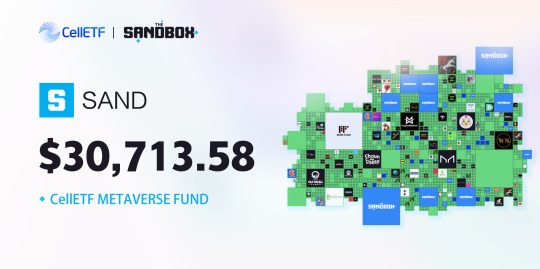
The Sandbox ➡️ is a decentralized gaming platform where players can create and own different gaming experiences and make money from them through functional ethereum-based tokens SAND.
SAND is an asset in CellETF's allocation. At present, the market value of SAND's position in CellETF Metaverse Fund is 🗣️$30,713.58, accounting for 2.12% of the net value.
The Sandbox has created a silk Road to The metasomes by engaging young people with its unique gaming strengths.
#The Sandbox #CellETF $SAND ##NFT #Metaverse #Fund
0 notes
Text

Sakagami in his research paper morphologically compared Apis laboriosa with Apis dorsata and considered laboriosa as world’s largest honeybee species. The morphological comparison of Land D reveals a number of distinct and
stable differences between. them. The main differences of L from D are size on the average of various parts about 10% larger, hairs on mesosomal dorsum concolorously twany yellow, without admixture of dark hairs, Integument
and hairs on metasomal terga black, not bicolorous, hairs 30% or more longer, Ocellar area flat, not raised Ratio IOD/OOD 0.3 against 1.0 in D, malar area 34% longer , second posterior section of submarginal cell 35% shorter, Discoidal displacement 35% smaller, Indica-vein 40% longer, Antegradular areas of metasomal sterna laterally 30,~50% wider, Gradulus of sternum 2 medially mildly, not sharply pointed, and of 3 medially convex forward, not postward and Sting with 13~14 pairs of barbs instead of 11.
.
.
.
.
.
.
.
...
#madhoney #madhoneyforsale #redhoney #medicinalhoney #intoxicatinghoney #hallucinogenic #followthejourney #delibal #Nepaliproduct #bestmadhoney #cliffhoney #nepal #uniqueproduct #honeyhunting #honey #hunting #rareproduct #nutrition #health #psychedelic #healthyfood #traditionalmedicine #hallucination #fitness
Make an order here 👉 www.bestmadhoney.com
0 notes
Text
TWO NEW GENERA OF DAPRIDAE (PROCTOTRUPOIDEA : HYMENOPTERA) FROM INDIA
Abstract
Two new genera of Diapriidae, viz. Alareka and Vadana are described with type species A. keralensis and V. sholayarica respectively. A key to genera of Indian Diapriinae based on males is also provided. Abbreviations : AV-Anterior view, DV-Dorsal view, FW-Forewing. F1-Fl1=Flagellomeres, HB-Head width, HL-Head length, L.B-Length-breadth ratio, m=Marginal vein, OD-Ocellar diameter, OOL-Ocelocular length, POL-Post ocellar length; sm-Submarginal vein; SFStigmal vein; T2=2" Metasomal tergite. TSS-Trans scutellar suture.
Please see full information
0 notes
Text
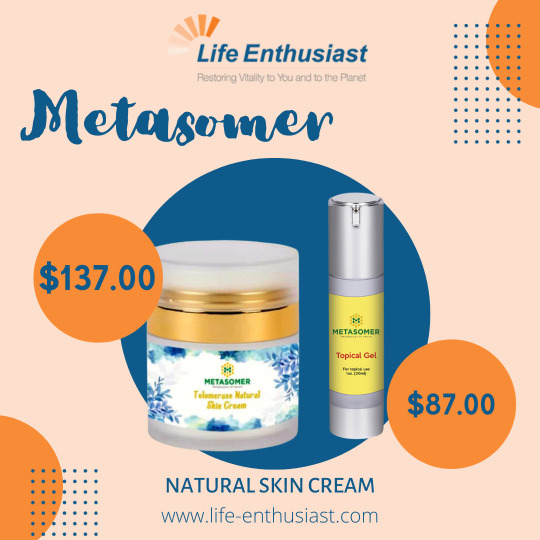


Have you ever spilled yourself a hot coffee? What did you do?
How did you soothe your skin after scalding hot coffee burns?
Here are the customers' reviews on how our Metasomer Topical Gel helps their coffee burn.
Grab one here: http://www.life-enthusiast.com/shop/metasomer/
#lifeenthusiast#healthylifestyle#wellness#nutritionist#supplements#metasomer#topicalgelcream#skinburn
0 notes
Text
Application
OOC INFO:
Name: Hannah
Age: 16
Pronouns: She/her
Timezone: Central time
IC INFO:
Character Name: Hino Sasu
Character Pronouns: He/Him
Character Age: 18
Class (number and course): 3-D
Affiliation (hero, villain, or neutral): Neutral/villain-leaning
Physical Description: Sasu has bulky scorpion anatomy attached to his lower back, including all metasomal segments and the stinger. The stinger is slightly longer than normal. He is fairly small in stature, but he has quite a bit of muscle in his legs and abdomen. His hair is a soft orange/pink color mixed in with a dusty brown, his eyes are light brown, and he has freckles. His skin is a light peachy color. He is missing his right arm because of an incident involving his stinger as a child.
Hero/Villain Name: Human Blade
Quirk Name: Death Sting
Description of Quirk (including setbacks/boundaries): His quirk, if toxins are released, will damage skin and muscle (if powerful enough) and burn immensely. If strong and condensed enough, the toxins can cause tissue to become necrotic and fall off altogether. If his stinger penetrates skin, the others muscles will become severely damaged. He will also go into anaphylactic shock if the toxins come into contact with his human skin, or if they are swallowed/inhaled. The toxins aren’t as strong if he uses them often.
Personality: His personality is downright chaotic. At first, when meeting strangers, his personality seems calm and almost cheerful. Once he sets his eyes on a possible target to jeer or bully, he will become very pushy and up-close-and-personal. He has no concept of personal space; he is always clinging onto someone or sulking because he hasn’t had close contact. Although he likes to bully people, he has a soft spot for certain types and tries desperately to keep them close to him, and train them to do as he does with others.
History: As a child, he was not able to control his scorpion joints as well as he can in the present. This caused him to have numerous accidents in public; this, in turn, caused many of his friends to turn against him and become afraid. Although they had similar quirks, his own parents had even given up on trying to help him become better at controlling his abilities. He was left to sort them out on his own, and become infatuated with the idea of ‘testing them out’ on others. After years of being pushed away by the outside, and ultimately losing his hand in an accident that he had caused, he had become cruel and uncaring of those around him. He would play around with those who had ended up trusting him, tossing them away after he had played with their emotions and made them do tasks in order to sate his own desires.
Twitter account: @Hino_Sasu
#villain#student#submission#boku no hero academia#boku no hero academia roleplay#my hero academia#my hero academia roleplay#bnhaoc#mod shinsou
0 notes
Text
New Post has been published on Biology Dictionary
New Post has been published on https://biologydictionary.net/deuterostome/
Deuterostome
Deuterostome Definition
The Deuterostomes are a clade of animals that undergo deuterostomy during their embryonic development. They are a sister-clade of the Protostomes, and the two together with the Xenacoelomorpha form the major group of animals called the Bilateria—a major group animals which display bilateral symmetry and are mostly triploblastic.
Deuterostomy
During embryonic development, the fused gametes from the male and female—the sperm and the egg—form the zygote.
In order to develop, the zygote undergoes a process called cleavage. Cleavage involves splitting into multiple cells called blastomeres, and results in a dense ball of these cells called a morula. In deuterostomy, radial cleavage occurs, whereby the blastomeres are arranged along a central axis and is characterized by several tiers of cells stacked on top of each other. Radial cleavage is one of the defining features of the deuterostome development, contrasting the spiral cleavage that is typical of the protostomes. Additionally, most of the deuterostomes display indeterminate cleavage, in which the developmental fate of each cell is not predetermined in the embryo and therefore each cell has the ability to develop into a complete embryo if isolated.
The image shows the defining differences between deuterostome and protostome embryonic development.
The blastula is the resulting structure, consisting of at least 128 cells surrounding a cavity of mainly empty space, called the blastocoel. Through a process called gastrulation, the cells of the blastula are reorganized to form the three primary germ layers of the gastrula that are present in all triploblastic organisms. Gastrulation begins with a small indentation in the blastula called the blastopore, the cells of which migrate to the opposite end of the embryonic structure, establishing the endoderm layer; the endoderm eventually gives rise to the digestive system.
In deuterostomes, the first cavity formed by the blastopore ends up as the organism’s anus, while the mouth is formed secondarily on the opposite side. This is the next major distinction between deuterostomes and protostomes; the protostomes form the mouth from the primary cavity and the anus second.
It is useful to note that the two names are derived from the Greek proto- “first” and deutero- “second”, and stoma meaning “mouth”. The deuterostomes develop a “second-mouth”.
In many egg-laying deuterostomes the peripheral layer of cells in the gastrula forms the ectoderm, which ultimately gives rise to the epidermis (the skin and hair) and the nervous system. In between the endoderm and the ectoderm is the mesoderm, which ends up as connective tissues, skeletal system, blood, the heart and kidneys and muscle.
In mammal development the outer layer of the blastula equivalent—the blastocyst—becomes the placenta and the inner cells give rise to the three primary germ layers.
Types of Deuterostome
The Deuterostomes can be taxonomically grouped into three clades.
Echinodermata
The echinoderms are a group of marine animals, which although are radially symmetrical in adult life, display bilateral symmetry in their larval stage and are thus classed within the Bilateria.
The echinoderms have anendoskeleton just below the skin made from calcium carbonate which provides rigidity and protection. Additionally, they have a hydrostatic skeleton—a fluid filled cavity present in many developed animals called the coelom, supported by hydrostatic pressure to allow movement.
Many echinoderms have structures called ‘tube feet’, which they use to grasp substrate in order to move, as well as for feeding and respiration. Predatory species use the tube feet to pry open bivalves and then feed by extruding the stomach out of the mouth to digest the prey. Non-predatory species use the tube feet for suspension feeding, whereby they flick food to their cilia, which then pass the food into the mouth.
The Echinoderms are separated into six taxonomic classes.
Crinoidea—Feather stars and sea lilies
Asteroidea—Sea stars
Ophiuroidea—Brittle stars
Echinoidea—Sea urchins and sand dollars
Holothuroidea & Concentricycloidea—Sea cucumbers & Sea Daisies
The image above shows an illustrative example of echinoderms from each taxonomic class.
Chordates
The chordates are a phylum of animals within the deuterostomes, which have the following common similarities:
A notochord. A flexible, supportive rod, made from material similar to cartilage. In the vertebrates this is replaced by the vertebral column during development.
A hollow dorsal nerve chord—This is formed from the ectoderm and runs the length of the body. In vertebrates, this makes up the central nervous system.
A post-anal tail. A tail that extends beyond the anus in at least some point of their development.
Pharyngeal gill slits in at least some point of their development. These are openings within the throat that allow the animal to breathe underwater. In marine organisms these become functioning gills, and in terrestrial animals they are modified for alternative functions.
Note that: All vertebrates are chordates—not all chordates are vertebrates.
The chordates can be separated into 3 subphyla:
The Cephalochordata
These cephalochordates are small invertebrate marine animals known as lancelets. They are simple fish-like organisms, which live with their tails buried in the sand and employ a filter feeding system. They are most likely the closest link between the chordates and other simple organisms.
The Urochordata
The urochordata includes the tunicates—also known as ‘sea squirts’. These invertebrate organisms are usually sessile and possess a U-shapes gut and two siphons, which allows them to take in food. The gills slits are modified in the adult form to allow filter feeding.
The image shows sea squirts, members of the urochordata which intake food and through their siphons (the visible holes).
The Vertebrata
The vertebrata is the largest subphylum within the chordates and the most morphologically complex. In addition to the typical characteristics of chordates, the vertebrates all posses a skull or cranium, which encases the brain and a backbone or vertebral column, which protects the dorsal nerve chord and internal organs as well as providing support.
They are also notable for the following evolutionary developments:
A hinged jaw, which allows the animal to capture food in a highly effective way.
The amniotic egg, containing a protective inner membrane through which gases and nutrients can be transferred to the embryo during development.
Limbs, either as fins or evolved into legs for improved movement ability.
The evolution of the pharyngeal gills into lungs.
The vertebrates are separated into seven extant taxonomic classes:
Agnatha—The hagfish and lampreys. Although they have a skull and basic vertebrae, these lack a jaw and vertebral column.
Condrichthyes—The sharks, skates, rays and sawfish. These have gills and an endoskeleton made from cartilage.
Osteichthyes—The bony fish. These have gills, an endoskeleton made from bone, and a ‘swim bladder’, which helps with depth control.
The ‘tetrapods’ are four-limbed vertebrates within the chordates:
Amphibia—Frogs, toads and salamanders. These are both marine and terrestrial organisms. Although in the adult form most of them have lungs, they can also breathe through their skin.
Reptilia—Turtles, snakes, crocodiles, lizards. These are ectothermic animals with scales and lungs.
Aves—Birds. These are endothermic animals with feathers and beaks.
Mammalia—These are endothermic amniotes with the defining characteristics of: 1)hair, which aids in insulation 2)mammary glands for producing milk 3)a neocortex, which allows complex brain function 4)three middle ear bones for enhanced hearing sensitivity 5)internal fertilization
Within the mammalia are the Eutherians or ‘placental mammals’; a group which includes the primates, such as monkeys and humans, cetaceans (whales and dolphins), rodents, cats, dogs and most other animals that are familiar to us.
The class Mammalia also includes the marsupials such as kangaroos, wombats and opossums, in which the offspring are born under-developed and complete development within a maternal pouch on the mother’s stomach.
Further included are the Monotremes, of which only the duck billed platypus and echidna species are extant. The monotremes are mammals that lay hard shelled eggs, additionally they lack nipples, so secrete milk through specialized hair follicles.
Hemichordata
The hemichordates are marine deuterostomes, which are characterized by a body that is comprised of three distinct sections: The anterior (front) prosome, the middle mesosome and the posterior (back end) metasome.
These are generally worm-like filter feeders, deposit feeders and detritivores and are considered to be the closest existing relatives to the vertebrates. Like other chordate deuterostomes, the hemichordates have pharyngeal gill slits and most have a dorsal nerve chord, although they lack the notochord.
They are divided into two classes:
Enteropneusta — The acorn worms. These can reproduce both through sexual and a-sexual reproduction.
Pterobranchia
Related Biology Terms
Protostomes – A clade of animals in which spiral cleavage occurs during embryonic development and the blastopore develops into the mouth.
Coelom – The fluid filled cavity present in most animals, which surrounds the digestive tracts and other organs.
Phylogenetic Tree – A diagram representing the evolutionary relationships between living organisms.
Bilateral Symmetry – A characteristic of the Bilateria Clade, in which the two sides of the body are mirror images of each other.
Quiz
1. Which form of cleavage is characteristic of all deuterostomes?
A. Radial cleavage
B. Spiral cleavage
C. Indeterminate cleavage
D. Rotational cleavage
Answer to Question #1
A is correct. All deuterostomes undergo radial cleavage in embryonic development. However, only some deuterostomes undergo indeterminate cleavage and only mammals undergo rotational cleavage. Spiral cleavage is characteristic of the protostomes.
2. Which of the following is a feature not associated with the chordates?
A. Dorsal nerve chord
B. Hydrostatic skeleton
C. Pharyngeal gill slits
D. Amniotic egg
Answer to Question #2
B is correct. The hydrostatic skeleton is the endoskeleton present within the echinoderms, as well as some other soft-bodied invertebrates.
3. In the deuterostomes, what is the fate of the blastopore?
A. The mesoderm
B. The mouth
C. The anus
D. The placenta
Answer to Question #3
C is correct. In the deuterostomes development, the blastopore eventually gives rise to the anus, while the mouth develops from the second cavity. ‘Deuterostome’ literally means ‘second-mouth’.
0 notes
Text
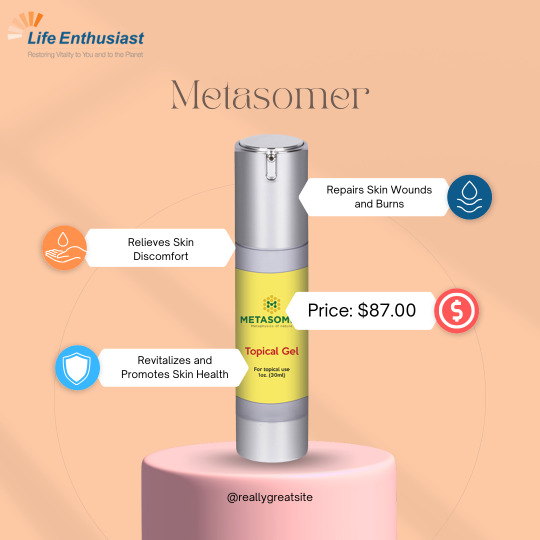
Vitamin E and Citric Acid are both great for repairing skin damages.
Our Metasomer Cream and Topical Gel contains Vitamin E and Citric Acid. These are beneficial for Repairing Skin Wounds and Burns, Relieves Skin Discomfort, and revitalizing and Promotes Skin Health.
Order here: https://www.life-enthusiast.com/shop/metasomer
0 notes
Text
Metasomer
Order here: https://www.life-enthusiast.com/shop/metasomer
0 notes
Text
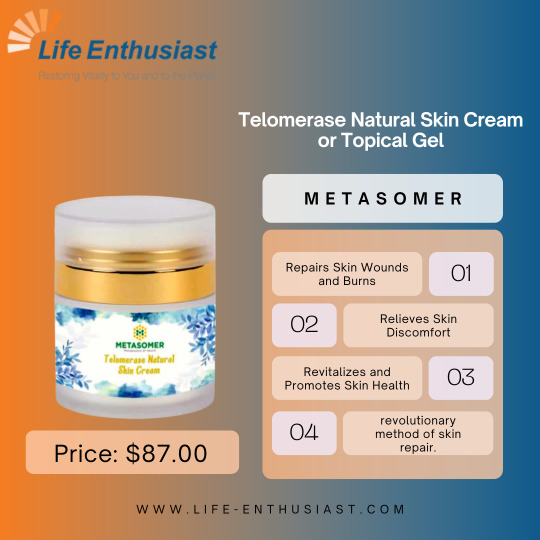
Do you currently have any skin rashes, discomfort, or itching?
Metasomer is the ideal solution for your needs.
Metasomer is a natural cream or gel that can be applied topically to repair and revitalize the skin. It is also effective at relieving the pain and discomfort caused by wounds and burns.
🛒🛒Order here: https://www.life-enthusiast.com/shop/metasomer/
1 note
·
View note